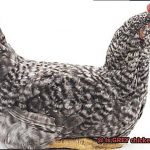Are you ready to elevate your smoking game and impress your taste buds with new and exciting flavors? Have you been pondering the idea of mixing different woods when smoking? Choosing the right wood can make or break the flavor profile of your dish, whether it’s meat or fish.
The question is: is it alright to mix wood types when smoking? Some BBQ experts swear by using a single type of wood for that perfect smoky taste. But others believe that blending different woods can add unique, complex flavors to your food.
In this blog post, we’ll delve into the pros and cons of mixing woods when smoking. We’ll explore the various types of woods commonly used for smoking and provide tips on how to choose the best combination for your specific dish. Additionally, we’ll touch upon potential risks associated with mixing woods and how to avoid them.
Whether you’re a seasoned smoker looking to experiment with new flavors or a beginner seeking to enhance your technique, this article is for you. So let’s dive in and discover whether it’s okay to mix woods when smoking.
Contents
What is Smoking Meat?
Smoking meat is an ancient cooking technique that has stood the test of time. The process involves slow-cooking meat over low heat using smoke from burning wood or charcoal, adding irresistible flavor to the meat while also preserving it by dehydrating and killing bacteria.
There are different types of smoking methods, including hot smoking, cold smoking, and smoke-roasting. Hot smoking involves cooking the meat at temperatures between 165 and 185 degrees Fahrenheit, resulting in cooked and tender meat with an intense smoky flavor. Cold smoking, on the other hand, is done at temperatures below 100 degrees Fahrenheit, making it ideal for foods that don’t require cooking like cheese and fish. Smoke-roasting combines both methods; the meat is smoked at a low temperature and then finished off with high heat to give it a crispy outer layer.
Choosing the right type of wood is crucial when smoking meat as it can make or break the flavor profile. Different woods have varying flavors, from sweet to savory to smoky. For instance, hickory wood has a strong smoky flavor that pairs well with beef and pork, while applewood has a sweet and subtle flavor that goes well with poultry and fish.
Mixing different types of wood is also common among seasoned smokers who want to create unique flavor profiles. However, it’s essential to consider the strength and density of each wood to ensure they complement each other’s flavors. For example, mixing apple and hickory wood results in a perfect balance of sweetness and smokiness, while mesquite and oak create a bold and robust flavor.
Is it OK to Mix Woods When Smoking?
As a smoking aficionado, you may have wondered if it’s okay to mix different types of wood when smoking meat. The answer is a resounding yes, but there are some things you need to keep in mind to achieve the best results.
Firstly, different types of wood can complement each other or ruin the taste of your meat. For instance, fruitwoods like apple and cherry can work wonders when mixed with hardwoods such as oak and hickory, creating an intricate and delicious flavor profile. However, mesquite is a powerful wood that can quickly dominate any other wood it’s mixed with, resulting in an unpleasant and overpowering bitterness.
To ensure that the flavors blend well together, it’s important to use woods in moderation. Overusing one type of wood can overshadow the others and ruin your meat’s taste. A good rule of thumb is to use no more than three types of wood in a single smoking session.
Another essential factor to consider when mixing woods for smoking is their moisture content. Using wet wood can create too much smoke, leading to a bitter taste in your meat. Therefore, make sure to use dry or seasoned wood for optimal results.
Benefits of Mixing Woods When Smoking
If so, then mixing different types of wood when smoking is a must-try technique. As an expert in this area, I am here to tell you about the numerous benefits of mixing woods when smoking.
First and foremost, mixing woods can create a complex and unique flavor profile that cannot be achieved with just one type of wood. Think of it as creating a masterpiece in your smoker. Each type of wood has its own smoke intensity and flavor, and by combining them, you can achieve an intricate blend of flavors that will make your taste buds dance with joy. From mesquite and hickory for a sweet and smoky flavor perfect for ribs, to applewood and cherrywood for a fruity and sweet flavor that works well with poultry or fish – the possibilities are endless.
But the benefits don’t stop there. Mixing woods can also benefit the cooking process itself. Some types of wood burn hotter and faster than others, so combining them can help regulate the temperature of your smoker and ensure a consistent heat throughout the cooking process. This is particularly helpful when smoking larger cuts of meat that require longer smoking times.
In addition to enhancing flavor and improving the cooking process, mixing woods can also be cost-effective. Some types of wood can be more expensive than others, but by combining them with less expensive woods, you can still achieve the desired flavor while reducing overall cost.
However, it’s important to note that not all wood combinations work well together. It’s essential to do research and experiment with different combinations to find what works best for you. Think of it as a delicious science experiment.
Considerations for Mixing Woods
Mixing different types of wood can be a game-changer when it comes to smoking, but before you start experimenting, there are some important considerations to keep in mind.
First and foremost, consider the intensity of the woods you’re combining. Some woods are more potent than others and can easily overpower other flavors. If you’re new to mixing woods, it’s best to start with milder woods like fruitwoods or nutwoods and gradually work your way up to stronger woods like hickory or mesquite.
Furthermore, consider the type of meat you’re smoking. Different meats pair better with certain types of wood, so it’s important to do a little research beforehand. Poultry tends to work well with fruitwoods like apple or cherry, while beef and pork often pair well with stronger woods like oak or hickory. You also want to consider how long you’re going to smoke the meat for – some meats will benefit from a longer smoking process with stronger woods.
Another crucial consideration is the amount of smoke being used. Too much smoke can be overwhelming and negatively impact the flavor of your meat. Start with a small amount of a new wood and gradually increase it until you achieve the desired flavor. Remember, it’s always easier to add more smoke than it is to remove it.
Lastly, make sure you’re using high-quality, properly seasoned wood. Using low-quality wood can result in unpleasant flavors and aromas that can ruin your dish. You want to make sure that the wood is dry and free from any mold or fungus.
Different Types of Woods to Use
Smoking meat is a time-honored tradition that adds complexity and richness to your favorite cuts. But the choice of wood for smoking can make all the difference between a mediocre or an exceptional taste experience. In this article, we will dive into the different types of woods that can be used for smoking and their flavor profiles.
Hickory Wood
Hickory, with its strong, smoky flavor profile, is one of the most popular woods used for smoking meat. It pairs exceptionally well with pork and beef, but it’s essential to use it in moderation as it can be overwhelming if used too heavily. Hickory is perfect for those who enjoy bold flavors that pack a punch.
Mesquite Wood
Mesquite has a bold and earthy flavor that works well with most types of meat. However, it’s also very potent, so it’s best to mix it with other milder woods to avoid an overpowering taste. Mesquite is great for those who prefer stronger, bolder flavors and want to add some depth to their meats.
Applewood
Applewood is a milder option with a sweet and fruity flavor that pairs well with poultry and fish. The delicate sweetness adds a subtle hint of flavor without overpowering the meat’s natural taste. Applewood is ideal for those who want to add just a touch of sweetness to their smoked meats.

Oak Wood
Oak wood has a milder flavor compared to hickory or mesquite, making it an excellent choice for smoking fish or vegetables. It burns slower and hotter than softer woods like apple and cherry, making it an excellent option for maintaining a consistent temperature throughout the smoking process. Oak is perfect for those who want a mild flavor that doesn’t overpower the meat’s natural taste.

Cherrywood
Cherrywood is another sweet and fruity wood that pairs well with pork, poultry, and vegetables. However, it burns quickly, so it’s best to mix it with other woods to avoid burning through your supply too quickly. Cherrywood is well-suited for those who want a touch of sweetness in their meats but don’t want it to be too overpowering.
Alderwood
Alderwood has a delicate, slightly sweet flavor that works well with fish and poultry. It’s not as commonly used as some of the other woods on this list, but it’s definitely worth trying if you’re looking for a unique and subtle flavor profile. Alderwood is perfect for those who want a delicate flavor that adds just a hint of sweetness to their smoked meats.
When it comes to mixing woods, there are no hard and fast rules. Some people prefer to use only one type of wood for smoking, while others enjoy experimenting with different woods to create unique flavor profiles. However, it’s generally recommended to avoid using strong-flavored woods like mesquite or hickory too heavily as they can overpower the more subtle flavors of other woods.
Combinations of Woods to Create Unique Flavors
As a connoisseur of smoked meat, I know that the type of wood used can make or break the flavor profile. But did you know that mixing different woods can create a symphony of unique and delicious flavors? It’s true. With a little experimentation, you can elevate your smoking game to the next level. So, let’s dive into the art of mixing woods to create mouth-watering flavors.
First on our list is the tried-and-true combination of hickory and applewood. This dynamic duo pairs a strong, smoky flavor with a sweet, fruity aroma, making it perfect for pork and chicken. The key to this combination is balance. Start with equal parts of each wood, and adjust according to your personal preference.
If you’re more of a beef or game meat aficionado, mesquite and oak should be your go-to combination. Mesquite boasts an intense, bold flavor, while oak offers a more subtle smoky taste. Once again, balance is crucial here. Start with equal parts of each wood and adjust until you find the perfect balance.
For those with a sweet tooth, cherry and pecan are the way to go. Cherry wood adds a delightful fruity flavor, while pecan wood provides a nutty, smoky taste. This combination works wonders with poultry and pork. Again, start with equal amounts of each wood and adjust to your liking.
It’s important to note that too much of one wood can overpower the other, resulting in an unbalanced flavor. That’s why it’s recommended to start with equal parts of each wood and adjust from there based on personal preference.

Strength and Density of the Wood
One of the secrets to achieving mouth-watering smoked meats is selecting the right wood. But how do you know which wood to choose? The answer lies in understanding the strength and density of wood.
Strength refers to how much heat and smoke a wood can produce. Hickory and oak are two heavyweight contenders that pack a powerful punch. They are capable of producing an intense amount of heat and smoke, making them perfect for smoking large cuts of meat. However, lighter woods like fruitwoods should not be overlooked. Although they may not be as strong as hickory or oak, they offer a unique flavor that can enhance the overall taste of your smoked meat.
Density is another crucial factor to consider when choosing the right wood. Dense woods like mesquite and hickory burn slower, producing an intense smoky flavor that infuses into your meat. On the other hand, lighter woods like apple and cherry burn faster and offer a milder flavor. Mixing dense and light woods provides a balance of smoke flavor that is not too overpowering.
While it’s tempting to mix as many types of wood as possible, it’s best to stick to one or two types to avoid overwhelming the taste buds. Also, ensure that you’re using natural, untreated wood to avoid any harmful chemicals.
Maintaining a Consistent Temperature
But did you know that maintaining a consistent temperature is just as critical? It ensures that your meat cooks evenly, retains its juiciness, and doesn’t become tough or dry.
Maintaining a consistent temperature while smoking meats can be challenging, especially when using different types of wood. Here are some tips to help you maintain that perfect temperature:
- Choose your wood wisely: Each type of wood has its unique burning characteristics, so it’s essential to select the right wood for your smoker. Some woods burn hotter and faster than others, while some impart stronger flavors. Heavyweights like hickory and oak produce an intense amount of heat and smoke, while lighter fruitwoods offer a unique taste. If you decide to mix woods, make sure to choose woods with similar burning characteristics to avoid sudden changes in temperature.
- Experiment with different wood combinations and ratios: Mixing woods can create a unique flavor profile for your meat, but it can also make it challenging to maintain a consistent temperature. Therefore, it’s recommended to experiment with different combinations and ratios to find what works best for your smoker and the type of meat you are smoking.
- Monitor the temperature of your smoker closely: To maintain a consistent temperature, it’s crucial to monitor the temperature of your smoker closely and make adjustments as needed. You can do this by adjusting the airflow or adding more fuel as necessary.
- Balance the amount of each wood used: Keep in mind that some woods may overpower the flavor of others, so it’s essential to balance the amount of each wood used. Pay close attention to the intensity of smoke produced by each type of wood to ensure that the flavor isn’t too overpowering.
ycXvBcGjqJE” >
Conclusion
In conclusion, the art of mixing woods when smoking is a delicate balance that can result in exceptional flavor profiles. However, it’s important to select the right combination of woods to avoid overpowering flavors and ensure that they complement each other perfectly. The strength and density of each wood, as well as its moisture content, must also be taken into account to maintain consistent temperature throughout the smoking process.
The key to success lies in experimentation. Start with milder woods such as fruitwoods or nutwoods before gradually venturing into stronger varieties like hickory or mesquite. It’s also essential to use high-quality and properly seasoned wood for optimal results.
By following these guidelines and tips for mixing woods when smoking, you can take your meat to new heights and tantalize your taste buds with exciting flavors. Whether you’re an experienced smoker or a novice looking to enhance your technique, now is the perfect time to start exploring different wood combinations and creating mouth-watering smoked meats.






